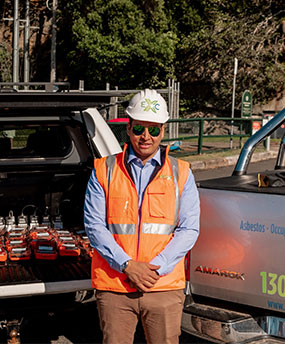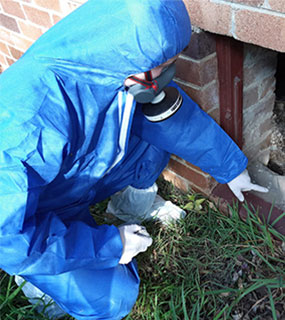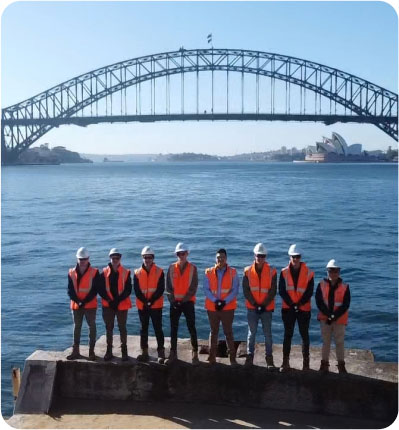Who we are
Airborne Asbestos Monitoring
We do this by delivering timely and accurate Environmental consulting, specialising in air monitoring, asbestos testing, mould testing and other hazardous material surveys. We help both businesses and end consumers alike, no job is too small or big for the EnviroX Consulting team.
General Information
Airborne Asbestos Monitoring
For homeowners, investing in asbestos air monitoring can give you peace of mind that your family and neighbours are not at risk of the health issues associated with asbestos exposure.
For those in the construction industry, the risk of asbestos exposure via airborne fibres is even higher. It’s been estimated that 1.3 million people working in trades are exposed to asbestos every year.
How is asbestos concentration measured?
Asbestos Air Monitoring is undertaken by a set volume of air being drawn through a thin filter membrane via an electronic air pump over a specific area of time. As the air is drawn through the pump, airborne asbestos particles are collected on the filter. The filter is then prepped and examined under a microscope to identify and determine the presence and exact number of respirable fibres collected.
From this filter, our expert team has the information they need to calculate the fibre concentration in an area.
Measuring airborne asbestos is not something that you can do yourself. Instead, extensive experience and state-of-the-art equipment are necessary to achieve an accurate and reliable reading. That’s why it’s vital to engage with industry professionals.
Here at EnviroX, we carry out asbestos air monitoring to the highest industry standards, so you can rest easy knowing your home or workplace is safe.
How asbestos travels in air
Small diameter fibres and fibre-containing particles that are airborne can be carried long distances via the wind or other means of propellant before they settle. What’s more, once settled, asbestos fibres tend to remain unchanged over extremely long periods of time, meaning they still pose a threat to human health. It’s critical that, when embarking on renovation and construction projects, you invest in quality asbestos air monitoring.
Asbestos particles that are extremely light, as we mentioned above, can travel through the air and remain airborne for some time. This means we are all exposed to low levels of asbestos in the air we breathe on a day-to-day basis. The good news is, ambient or background air contains such a low level of asbestos fibres (10 to 200 fibres in every 1,000 litres of air), that it’s highly unlikely we will become ill from the exposure.
The majority of people who do suffer from asbestos-related diseases have worked on projects that forced them to inhale large quantities of asbestos on a regular basis. Incredibly, before the full extent of asbestos’s dangers became known, construction workers inhaled up to 1 million times the background concentration of asbestos fibres.
What do the results mean?
Asbestos is harmful for your health
Services by stages
We can help you from start to finish
If you would like asbestos in your property to be removed safely, please do not hesitate to get in contact with our friendly and experienced team.
We make sure your health is our number one concern and we would be more than happy to answer any questions you may have about the entire removal process.



